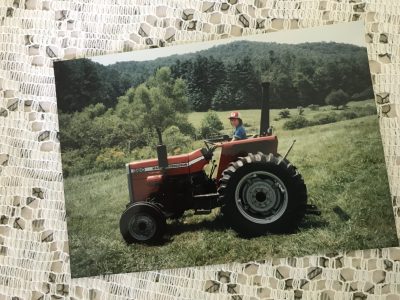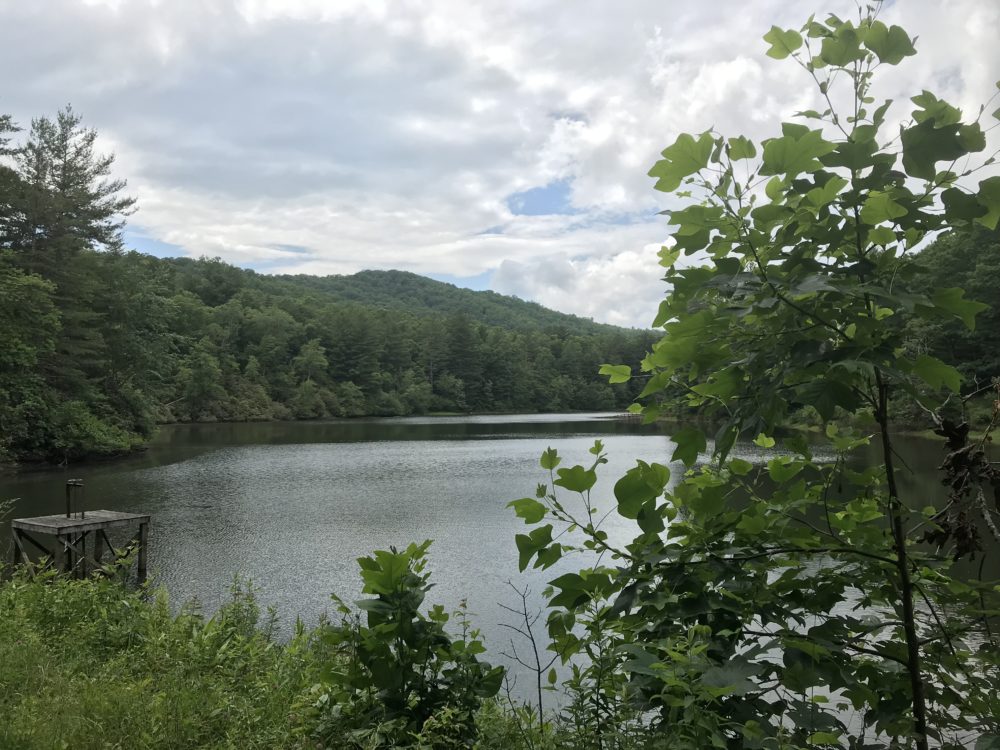Back to the Land

A co-founder of Mother Earth News donates land for a nature preserve
Jane and John Shuttleworth moved to the mountains of North Carolina in the 70s as “back to the landers”—but they wanted to do more than drop out of society, grow their own food, and live off the grid. They wanted to build a community of “free individuals” with the skills to live close to the land, in harmony with nature.
They started by putting out a newsletter but it wasn’t enough. There were too many ideas to share. So, they started a magazine, Mother Earth News. And they knew they’d never get people’s attention by just going on about the problems they saw in the world. They had to show solutions—people doing things that worked, that other people could learn to do too.
And they didn’t just write about solutions. They went after them. They rolled up their sleeves and tried to build them.
Movers and Shakers
In 1973, a few years after starting Mother Earth News in Ohio, they moved to a 600+ acre tract of land in Transylvania County, where Jane lives today. That gave them room to try things. “We called it the EcoVillage, but that’s misleading” Jane says. “No one lived on the land, except for a couple of gardeners. It was a research facility.”
Over the years, the crew of Mother Earth News built passive and active solar systems, harnessed power from a water wheel, designed alternative vehicles, ran experimental farm plots, and raised hydroponic vegetables in a geodesic dome. Then there was the magazine: over 80 articles per issue, many submitted by experts and experimenters who were hardly writers. It took a lot of editing.

“People think it’s a lot of fun, but it was a lot of work,” Jane says. “Especially when you’ve got a lot of people working for you and you’ve got to get the magazine out every two months plus all the other things we were doing.” Photos from those days show Jane driving a tractor, setting type, preparing magazines to mail, and sifting through volumes of correspondence. “We got so much mail, we had our own zip code,” she said in an interview with MountainX in 2007. “And letters would simply be addressed to ‘Dear Mother.’”
Sara Pacher, a long-time writer for the magazine, recalled working past midnight and through weekends. But it was new every day. In a 1990 essay, she wrote, “You might interview a famous person one day and study the subtleties of birthing piglets, making compost, or sharpening chain saws the next.”
In 1982, Jane and John sold the magazine to three of their employees. It has since changed hands several times, but it’s still in publication today. With circulation of over a million at its peak, Mother Earth News was a mover and shaker through decades of radical rethinking about humans’ relationship to the environment.
Garden of Eden
Life is quieter today on the land that once was humming with the activity of Mother Earth News. But there are other kinds of activity. Waterfowl rest from their long migrations on the lake and the wetlands. Coyotes howl at night on dark ridges. Deer and turkeys thrive in the forest. Springs feed clear creeks. And old-growth trees keep stretching up toward the sky.
These are the kind of wonders that John wrote about in 1975: “I think that we live in an unbelievably marvelous Garden of Eden. Surrounded by miraculous life-forms almost without number. Kept alive by a mysteriously interwoven, self-replenishing support system that, with all our scientific ‘breakthroughs,’ we still do not understand… And yet, as favored as we are by all this real wealth, we somehow perversely prefer to spend almost all waking hours interpreting the sum total of this reality in terms of the narrow and distorted, strictly human-centered concept of money.”
It’s been over 35 years since Jane had a direct hand in Mother Earth News and life has moved on. She and John long ago divorced, and he passed away in 2009 in Colorado. For the last 15 years, Jane has been gradually building a new house that looks like an historic house—modeled on Greek Revival homes built in America in the late eighteenth and early nineteenth centuries. Through wavy glass, its windows look out on big oaks and leafy hillsides.
Jane recalls when they first found this land in Pisgah Forest where she has lived most of her life. She says, “I always wanted to come back here, because when I was in college I came here in the summers and taught horseback riding at summer camps… I just always liked being in the mountains.”
Jane has nurtured a lifelong passion for American saddlebreds. She doesn’t often ride these days, but, she says, “When I do ride, I feel right at home on a horse. I feel better than when I’m not on a horse actually!”
She says she sees wildlife every day. And, having lived so long in the same place, she notices the changes. You never used to hear coyotes at night, because there were no coyotes in the Eastern U.S. The air is more humid. Invasive plants are spreading, probably due in part to changes in the weather.
Flipping through old photos, Jane tells a story about a goose—a plump white bird with its neck stretched tall in the photo. “That goose lived here for years and years,” she says. “It was a domestic goose. He never could keep a mate because when they nest they’re vulnerable to some predator getting them. So he lost his mate and I got another one for him and he lost that one, so I didn’t get any more.
“So, he was here by himself but he would join up with the Canada geese. For a number of years there was a pair of Canada geese that nested on the island out in the lake… And after the little goslings hatched out, that white goose would just swim around with them and babysit for them. Occasionally the parents would just fly off and he’d be there babysitting the little Canada geese.” She laughs. “They just said, oh, he can’t fly away, we’ll leave him here with the babies.”
Protecting the Land

Jane says she wouldn’t want the home for so many living things to ever be lost to development. So, last year, she protected a large part of her land, donating 267 acres of forested ridges to Conserving Carolina. She retained a life estate, which gives her the right to continue using the land as long as she lives. Eventually, she says, she would like to protect more of her land, perhaps with a conservation easement.
“I’d like to protect all of it because it has such biodiversity,” she says. “You can go to DuPont Forest and walk for miles and you see mostly the same thing over and over, because most of that land has been clear-cut at some point in the past. But I don’t think this land’s ever been clear-cut. There’s been some selective logging but the old fashioned way with horses and such. They’ve never gone in there with big machines and just destroyed it. And so there’s a lot of diversity here and a lot of little ecosystems.
“You could put some trails in back there and, just walking a very short distance like a mile or so, you’d see a lot of different things. There’s pine forests and hardwood forests and old growth forests and the wetlands. There’s not any major waterfalls but there are some pretty little cascades and a few rock formations. So it’s not as spectacular as other places… but it would be a really good place for a nature preserve because of the diversity.”